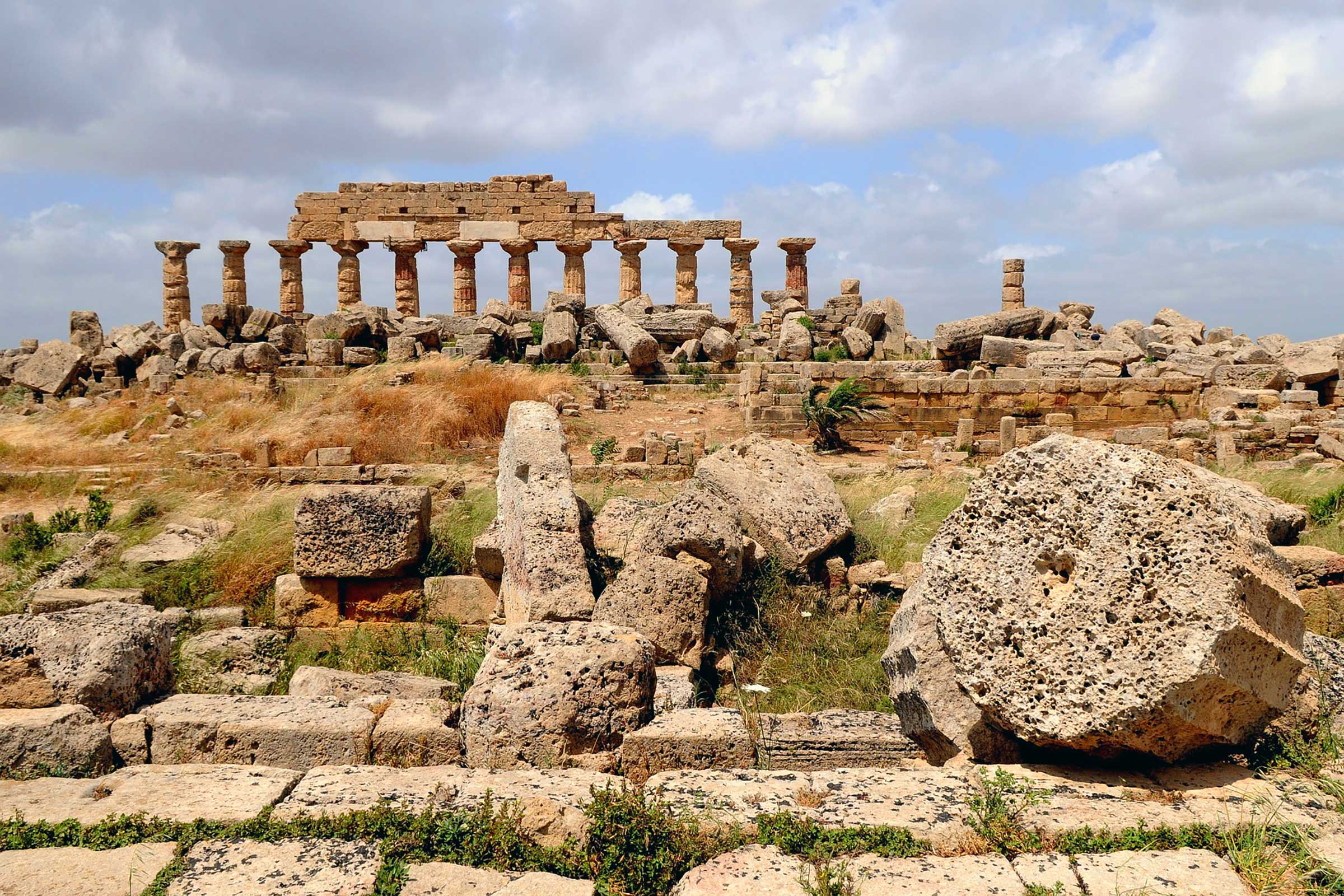Selinunte
The site of the ancient Greek city of Selinunte occupies a remote corner of the coast about 30 km east of Mazara del Vallo in silent isolation. Selinus, the westernmost of the Greek colonies, founded by the Greeks of Megara Hyblaea around 650 BC, reached the peak of its development in the 5th century BC. Acerrima enemy of Segesta , with whose territory bordered to the north, the powerful city with its fertile plain attracted numerous enemies, and it was only a matter of time before Carthage, an ally of Segesta, set its sights on Selinunte.
Geographically vulnerable, the city was sacked by the Carthaginians , and every attempt at recovery was crushed by earthquakes , which later razed it to the ground. The site was inhabited until 250 BC, when the settlement was again destroyed by the Carthaginians and its population was permanently moved to Marsala before the Roman invasion. After a brief Arab occupation, the site fell into oblivion until the sixteenth century, when it was rediscovered.
Archaeological park
Acropolis
The archaeological park is divided into four areas: the acropolis , the ancient city , the oriental temples and the Sanctuary of Malophoros . It extends over a vast area dominated by the hill of Manuzza , where the real ancient city stands. There are two entrances that give access to the ruins: one leads to the eastern temples, while the other takes a 15-minute walk through the depression known as Gorgo di Cottone
The acropolis, the heart of the political and social life of Selinunte, occupies a slightly inclined plateau overlooking the Gorgo di Cottone and the ancient port , now covered with sand. It is crossed by two arteries that cross at right angles on the north-south and east-west directions dividing it into four distinct areas that include seven temples .
In the south-eastern part there are five temples, the northernmost Temple D , erected towards the end of the sixth century BC The extraordinary metopes found by Harris and Angell and the gigantic mask of Gorgon that are currently exhibited at the Regional Museum of Palermo come from from this extraordinary structure, which experts believe was dedicated to Apollo.
Next to it is the smaller Temple B , from the Hellenistic period. According to what is supposed, it would have been dedicated to the philosopher and doctor from Agrigento Empedocle, whose water drainage works saved Selinunte from the scourge of malaria.
The other two temples, Temple A and Temple O , are the closest to the sea and also the most recent as they were built between 490 and 480 BC They are so similar in style and size to suggest that they were dedicated to the twins Castor and Pollux.
Ancient city
Crossing the sanded bed of the Modione west of the acropolis, going up a dirt path, you reach the remains of the ancient temple dedicated to Demeter, goddess of fertility and harvest . In the middle of the ruins we can distinguish two altars, the largest of which was intended for sacrifices. They are among the most important finds of the site because they provide a deeper insight into the social history of Selinunte, in fact thousands of votive offerings have been found including small steles crowned by human heads.
Eastern temples
Located north of the first entrance to the archaeological park are the most amazing monuments of Selinunte , starting with the majestic Temple E. Built in the 5th century BC and rebuilt in 1958, it stands out for its completeness. Temple G , the northernmost one, was built in the sixth century BC although unfinished it is one of the largest places of worship in the Greek world, today there remains only a heap of ruins not without a certain charm.
Eating in Selinunte
The nearest locality to the archaeological site is Marinella di Selinunte , where there are some hotels and some restaurants.
